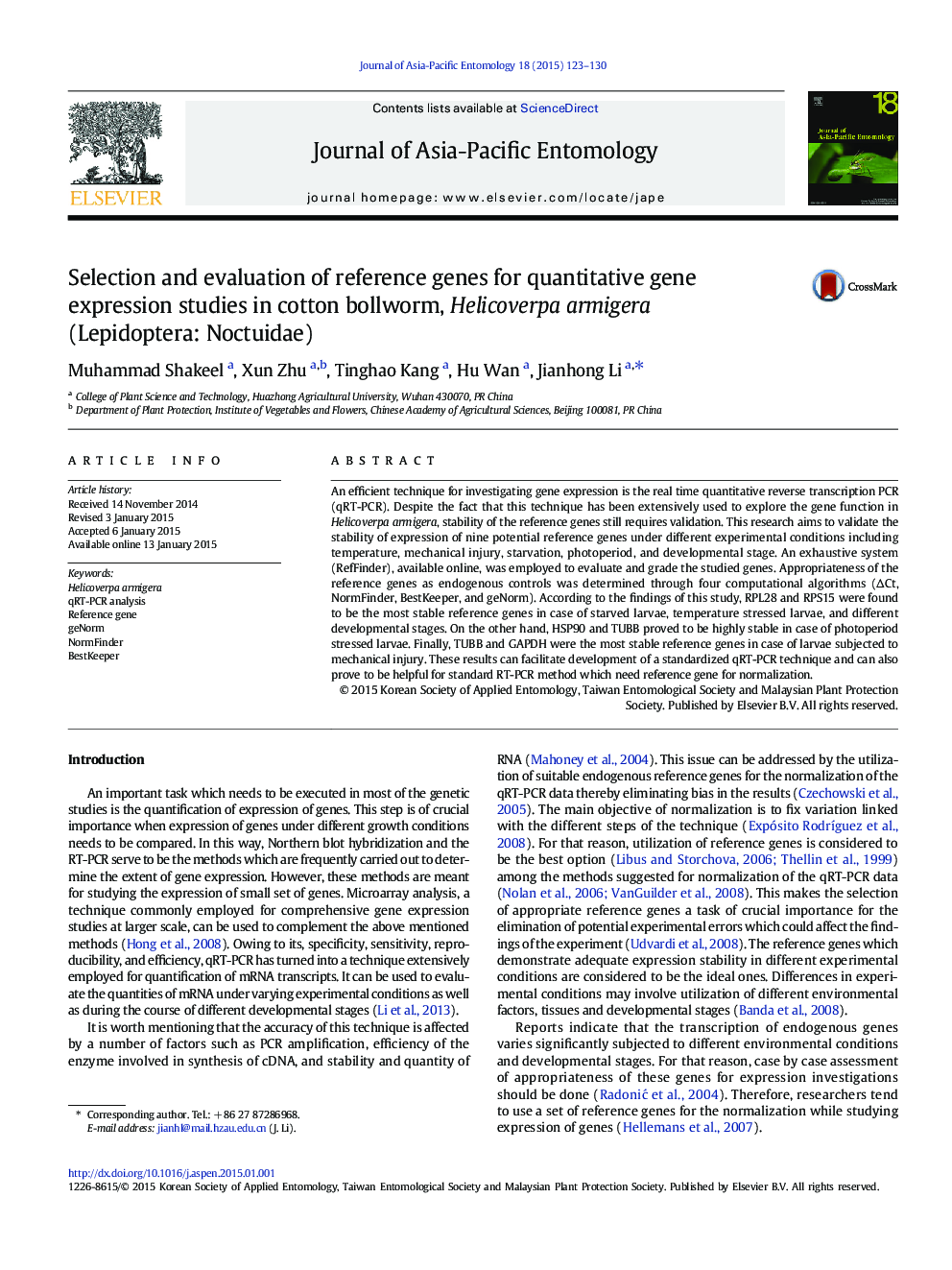| Article ID | Journal | Published Year | Pages | File Type |
|---|---|---|---|---|
| 4524464 | Journal of Asia-Pacific Entomology | 2015 | 8 Pages |
•Housekeeping genes stability was tested in different experimental conditions.•RPL28 and RPS15 showed highest expression stability in most of the samples.•Expression level of reference genes varied in different experimental conditions.•This study provides guidelines to obtain more accurate qRT-PCR results.
An efficient technique for investigating gene expression is the real time quantitative reverse transcription PCR (qRT-PCR). Despite the fact that this technique has been extensively used to explore the gene function in Helicoverpa armigera, stability of the reference genes still requires validation. This research aims to validate the stability of expression of nine potential reference genes under different experimental conditions including temperature, mechanical injury, starvation, photoperiod, and developmental stage. An exhaustive system (RefFinder), available online, was employed to evaluate and grade the studied genes. Appropriateness of the reference genes as endogenous controls was determined through four computational algorithms (∆Ct, NormFinder, BestKeeper, and geNorm). According to the findings of this study, RPL28 and RPS15 were found to be the most stable reference genes in case of starved larvae, temperature stressed larvae, and different developmental stages. On the other hand, HSP90 and TUBB proved to be highly stable in case of photoperiod stressed larvae. Finally, TUBB and GAPDH were the most stable reference genes in case of larvae subjected to mechanical injury. These results can facilitate development of a standardized qRT-PCR technique and can also prove to be helpful for standard RT-PCR method which need reference gene for normalization.
Graphical abstractFigure optionsDownload full-size imageDownload as PowerPoint slide
